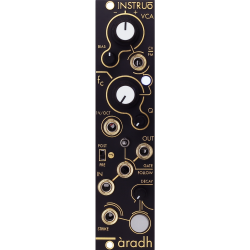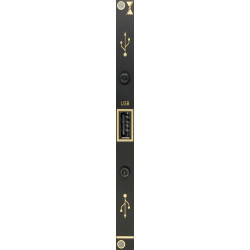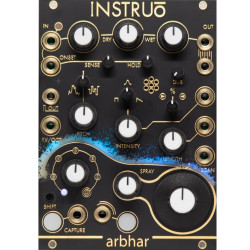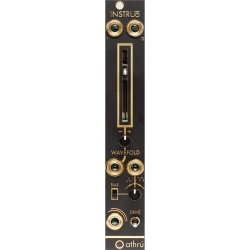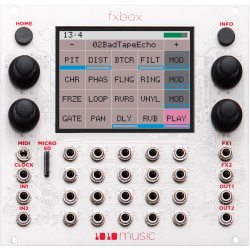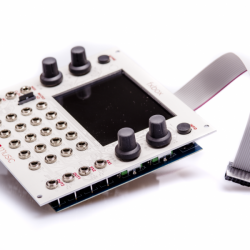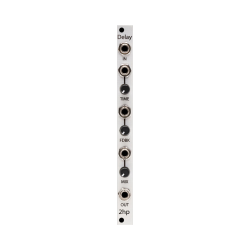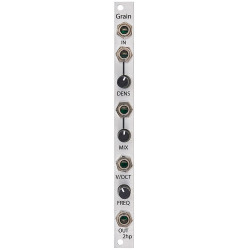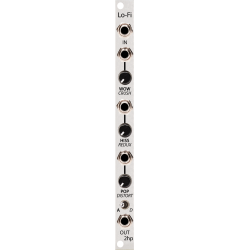![Instruo Tanh[3] Instruo Tanh[3]](https://www.synthesizer.gr/image/cache/catalog/2%20modular%20systems/instruo/tanh-2-550x550.png)
- Stock: Sold Out
- Model: INSTRUO-TANH
More from this brand
Tanh[3] is a three channel, all analogue, wave shaper. It takes an input signal and outputs the hyperbolic tangent function [tanh(x)] for that signal.
In more useful terms, it adds curves to a signal!
Traditionally the circuit is used to shape a triangle wave to a sine but when used with more complex signals it behaves as a single knob limiter.
Description
Size
4HP
Depth: 27mm
Power
+12V: 15mA
–12V: 10mA
Specification
The tanh[3] has three independent channels for wave shaping.
Description
For many Max/MSP and/or PD users, the [tanh~] object may be familiar. It is likely a much used secret weapon in many contexts!
Describing what the tanh[3] does to a signal, both mathematically and sonically can be a headache, and not particularly useful. So I will describe some particularly fun use cases to give a bit of context.
Feedback control:
Feedback is fun. But feedback can get unpredictable.
The user can insert tanh[3] in the feedback path and use it to reign in runaway feedback. Whether it’s feedback in a delay loop, a reverb, filter or straight up microphonic
In this context, it functions as a limiter on feedback amplitude.
Instead of fading away to silence, when longer sustain is desired, or running away uncontrollably, a signal can be controlled much more easily with a tanh[3]. There will be a much wider range at which a feedback oscillation will stabilise musically.
Wave shaping:
Running a triangle wave through a tanh[3] will allow for some interesting wave shape control
Fully CCW and the resulting signal will be a slightly attenuated pass through of the original triangle wave. As the level is increased, the corners will soften and the waveform will shape into a sine wave.
When a level has increased the sine will soft clip and eventually settle into a unique peaked waveform.
Limiter/distortion:
tanh[3] reacts very well when the user runs a complex audio signal through one of the channels. Drum voices especially!
The effect is sonically similar to compression but achieved through wave shaping as opposed to gain reduction. Limiting is a more appropriate description but it definitely has its own unique characteristic.
Increasing the level will introduce soft clipping distortion/overdrive.
-285x169.png)
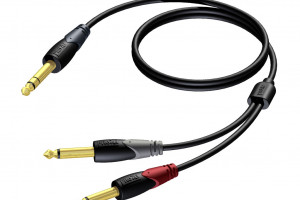
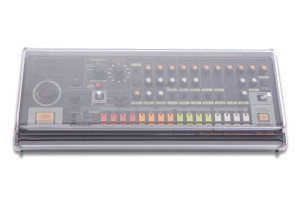
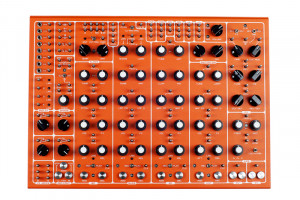

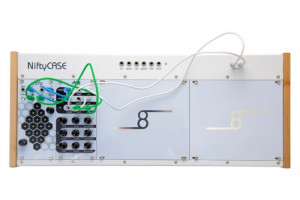


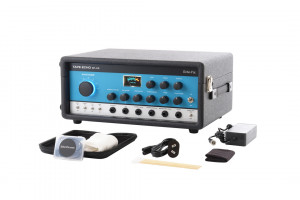

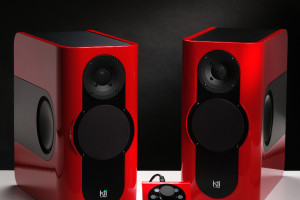

![Instruo 1[f] Instruo 1[f]](https://www.synthesizer.gr/image/cache/catalog/2%20modular%20systems/instruo/1f-1-60x60.png)



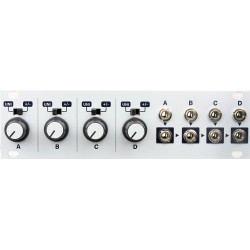
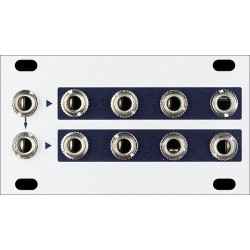
![Instruo 1[f] Instruo 1[f]](https://www.synthesizer.gr/image/cache/catalog/2%20modular%20systems/instruo/1f-1-250x250.png)
